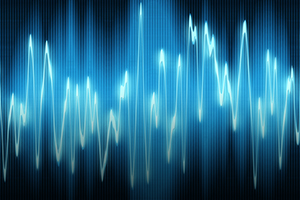Atomic Radio
 Engineers have built the world’s smallest radio with building blocks the size of two atoms. It utilizes atomic-scale imperfections in pink diamonds known as nitrogen-vacancy (NV) centers, which can be created by replacing one carbon atom with a single nitrogen atom and then removing an atom next to it. The resulting “holes” possess several useful properties, including sensitivity to electromagnetic fields such as those used in FM radio.
Engineers have built the world’s smallest radio with building blocks the size of two atoms. It utilizes atomic-scale imperfections in pink diamonds known as nitrogen-vacancy (NV) centers, which can be created by replacing one carbon atom with a single nitrogen atom and then removing an atom next to it. The resulting “holes” possess several useful properties, including sensitivity to electromagnetic fields such as those used in FM radio.
When radio waves enter an NV center, they are converted to red light. A photodiode is used to convert the light into current, and the current is then fed into a simple speaker or headphone to generate sound. The receiving frequency of the NV centers can be tuned by creating a strong magnetic field around the diamond using an electromagnet.
Although billions of NV centers were used to boost the signal strength, the radio will also work with a single NV center. It can operate in extreme environments like those encountered in space; the researchers were able to play music at 350 degrees Celsius (about 660 degrees Fahrenheit). Since diamonds are biocompatible, they could be used inside the human body, and their ability to convert information into light makes the tiny radios excellent candidates for quantum computing, photonics and sensing.
For information: Marko Loncar, Harvard University, John A. Paulson School of Engineering and Applied Sciences, 29 Oxford Street, Cambridge, MA 02138; phone: 617-495-5798; fax: 617-496-6404; email: loncar@seas.harvard.edu; Web site: http://www.seas.harvard.edu/